Trail running along the Great Wall of China
Smack dab in the middle of a roundabout was a gigantic sign reading "Beijing 2022." Actually, from the back seat of the car I was in, I saw "Beijing 2022" everywhere as we approached the city of Chongli: on flags, on banners lining the streets, on huge billboards plastered onto the facades of buildings. Even though we'd driven for more than three hours and China's capital was well behind us, it still felt as though we were in a suburb of the metropolis of 22 million people, at least by Chinese standards. If I'd driven for three hours starting from my homeland of Switzerland, I'd have reached either Italy, France, Germany or Austria.
If it hadn't been for the five-ringed Olympic symbol under the letters, I wouldn't have had the slightest idea of what was going on in 2022 in Beijing. Of course I'd researched the area I was traveling to, but I'd never heard of the city of Chongli, never mind the fact that the Olympic winter games would be taking place there soon. Thanks to my Swiss preconceived notions - due in no small part to my frequent trips to the Middle Kingdom, as China traditionally refers to itself as - China had not figured strongly in my mind as a location for winter sports. Or for trail running. Or even for outdoor sports in general. That's why I was even more thrilled when I received a request from SANFO to photographically document one of their biggest annual events: The "Columbia SANFO Ultra 168" trail challenge.
Two e-bikes, please
In a prior Skype video call, we'd discussed the last few unresolved issues. "What exactly do you need to document the trail run event, in addition to a guide/translator and a driver?" Huiui had asked. She was in charge of organizing SANFO sporting events. "Well, it would be pretty amazing if my guide and I could have the use of an e-bike, so that we can more easily cover some ground," was my reply. To make sure my request was clear, I'd sent her a photo of one of Specialized's top e-bikes, with the comment: "Something like this." Just to make sure I wasn't going to have to ride the trails on a beach cruiser.
The day I'd arrived, two days before the race, I'd met everyone for lunch. An Italian restaurant serving pizza, pasta, and tomato-mozzarella salad. The people in charge hadn't wanted me to suffer total culture shock and had chosen a western-style restaurant. After a detailed briefing on the three race days, a small pick-up truck pulled up, and two e-bikes were unloaded. The exact same model I'd sent as a reference! I remember standing before the two high-end e-bikes, my mouth agape in astonishment. "You said you needed two e-bikes, so we organized these for you," Huiui grinned.
10 km or 168 km - what will it be?
More than 4,000 athletes had registered for the "Columbia Sanfo Ultra 168" event. There were next to no foreign athletes, with the exception of a few expats living and working in China who'd heard about the race and had braved the Chinese registration process. Most of the runners in the starting area were Chinese. Equipped with only the best gear and raring to go, the first round of runners, totaling just under 600, started into the hardest and longest circuit. This involved conquering 168 kilometers. Total elevation gain: 8,000 meters. They had 72 hours to complete the circuit. In my eyes, as a non-trail runner, an impossible feat. The remaining participants were signed up for the 130-km, 100-km, 70-km, 50-km and 30-km loops, or the 10-km "Joy Run." The start times were spread out over the three race days, with runners either running less laps or starting from a different location. The one thing all the runs had in common was that they went through incredibly varied terrain, through ancient villages, along ski lift lines, over mountain ridges and even along or on the Great Wall of China.
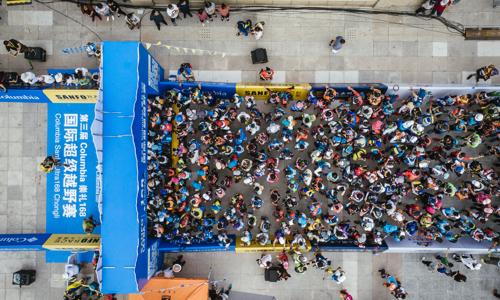
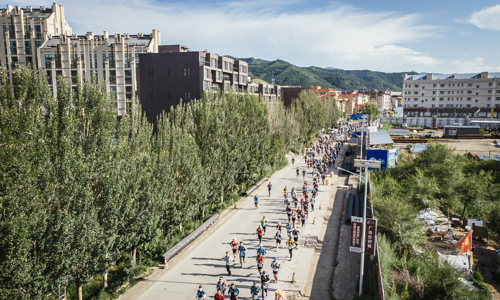
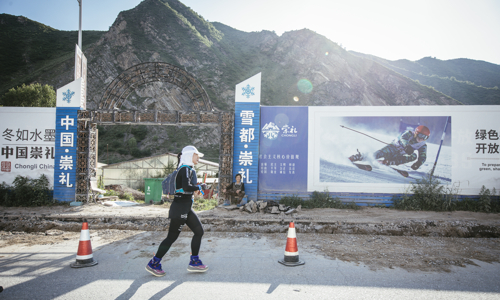
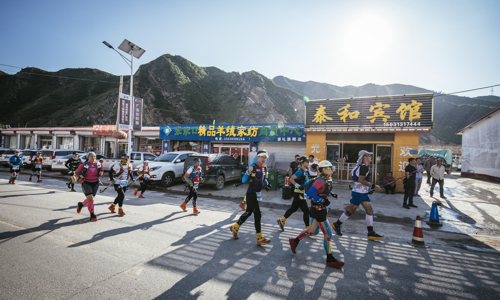
Out of the planned city and into the wild
The contrast couldn't have been more extreme: An impressive infrastructure has been raised from the ground up in the area surrounding Chongli. Maglev train lines and highway interchanges are nearing completion, connecting the winter sports area with the capital city. A collection of hotel complexes is under construction, forming a new city district. The future "athletes' village" has sprung up where once an actual village stood. Everything appeared to be running on schedule for the big 2022 event. An expansive and green mountainous landscape graces the city outskirts. Swaths of ski runs cut through the densely forested mountains, which are dotted with wind turbines. The landscape looks more like something I'm used to seeing in Europe.
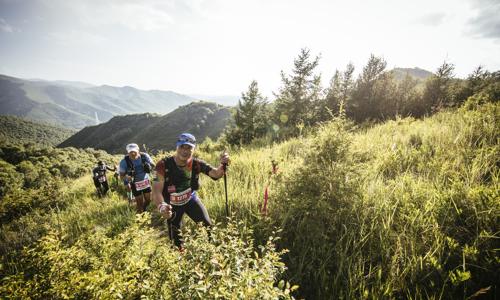
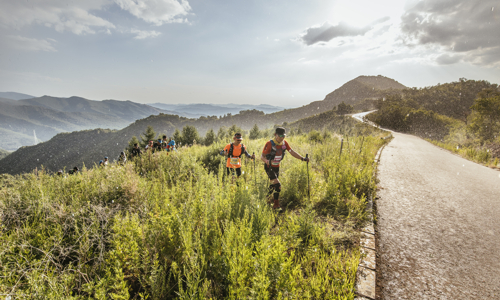
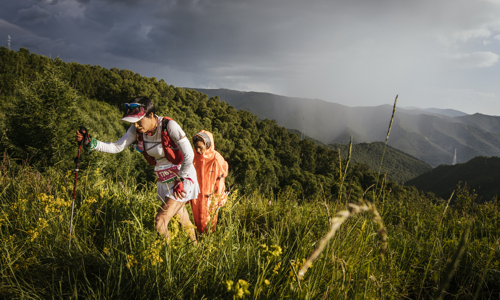
I accompanied the first group of racers to the hilly backcountry. A few hours later, it started to rain. The mood was amazing, the participants were still fired up, and they all gave me a friendly wave. Of course, the biggest part of the race still lay ahead. In no way did they resemble the exhausted and dazed-looking runners I would be seeing three days later. I reached checkpoint 2 with my e-bike. Just over 22 kilometers covered, the sun setting behind the forest-clad hills. I biked up a gravelly ski run. Once I reached the top, I shot the last photos of the first day in the near dark. It started to rain again. I was happy to call it a day and to not have to run through the pouring rain and the darkness of night...
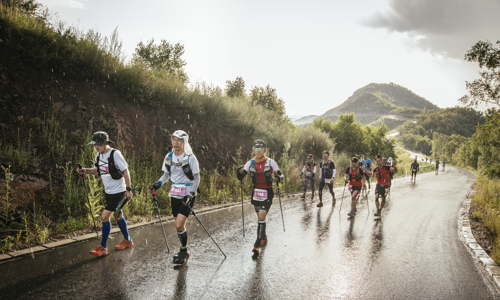
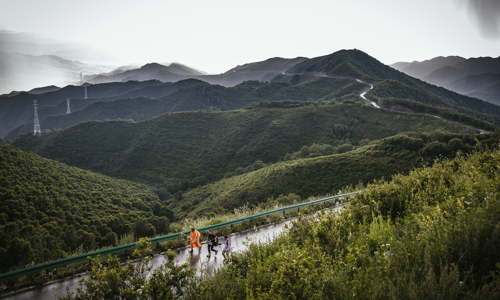
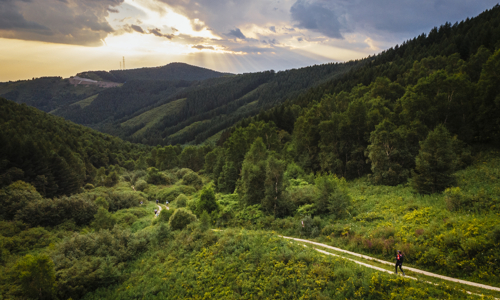
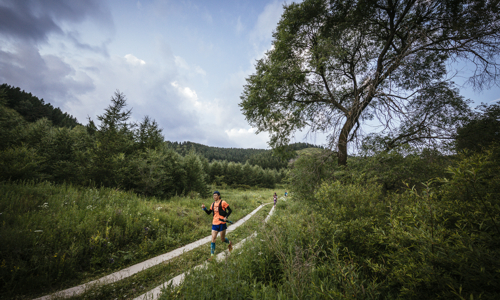
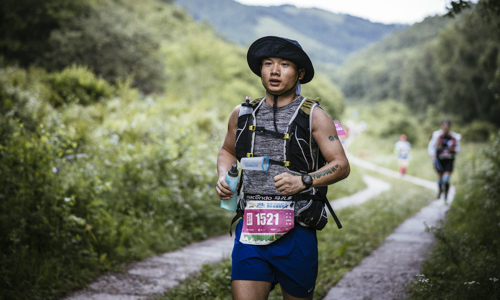
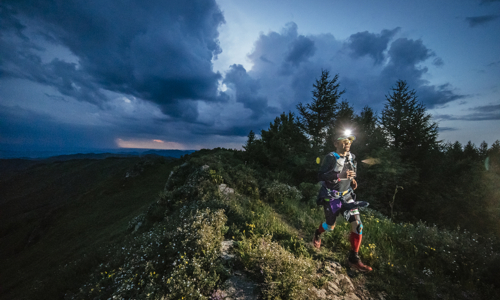
Race day 2: So that's the Great Wall of China?
Well before sunrise, my guide Patrick and I prepared to ride our e-bikes up to the Thaiwoo ski resort's mountain station. The first runners of the pack had already made it past the mountain station in the dark and were more than half way to the finish line. At this point, the athletes for all the different races had come together and were running the same stretch, and the only way to tell the runners apart was by looking at the color of the numbers on their running bibs.
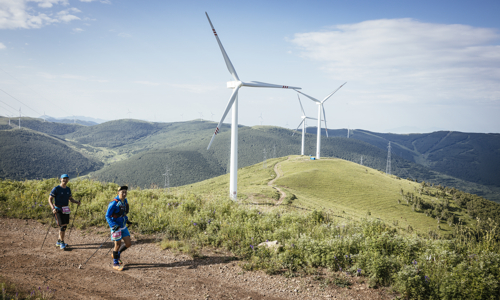
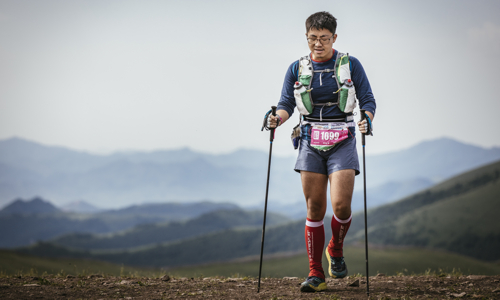
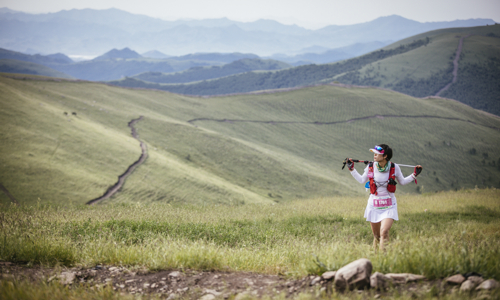
Once we'd reached the top, we carried our e-bikes over a huge pile of rocks. "You just climbed over the Great Wall of China," Patrick called out. I remember thinking that I'd imagined this wall to be somewhat different. I launched my drone, at which point I was able to see the actual scope of the "rock pile." What had looked like a 4-meter wide pile of rocks from close up displayed its true dimensions when seen from above. The "Wall" was easily recognizable as such and extended for kilometers along the mountain range.
A refreshment stop had been set up at the ski resort's mountain station. Some of the athletes used the restaurant as a place to sleep after having run through the night. Others fortified themselves with some noodle soup. The glowing faces from the day before were already showing signs of the overnight exertion. We rode our bikes down the single tracks and reached a traditional village. The route went right through the farm village, and I snapped a few great shots of the inhabitants, their houses and their surroundings. This is exactly what I'd imagined a trail running event in China would look like!
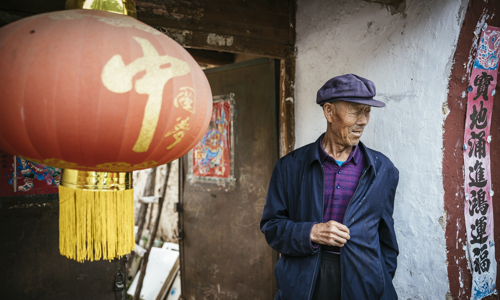
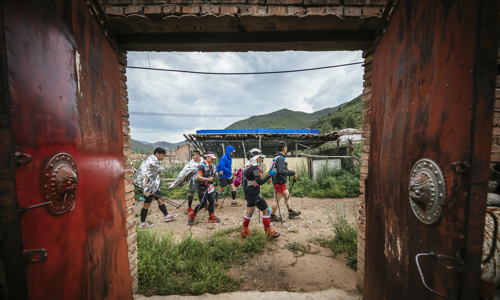
From here, our driver picked us up and took us to the next checkpoint. Gigantic white wind turbines rose skywards along the mountain range. The race took participants between the wind turbines and through birch forests to the next checkpoint. From here, my guide Patrick and I decided to do the next stretch on foot. While the sun gradually set on the horizon, the extreme athletes traversed the thickly forested hills, visible here and there between the trees. Chongli could be seen off in the distance. Those who had made it this far could already set their sights on the finish line, the end of the race within reach. I took a few final photographs. When night fell, I headed down the trail into the valley, guided by my headlamp. I was pretty exhausted after doing this short stretch on foot and was happy to see our driver waiting at the foot of the mountain. I couldn't even fathom putting myself in the shoes of the runners doing the 168 kilometers.
Race day 3: The final slog
I returned to the last stretch I'd covered the day before. Gone were the friendly waves and happy, smiling faces filled with anticipation. Hardly surprising! Those who were on Day 3 and still had to conquer the last 10 kilometers of the race, after having run through two nights, were focused only on finishing. The champions had long-since reached the finish line and were recovering, but the stragglers were still struggling through their final kilometers. This was where the real drama was taking place, within sight of the finish line, not at the head of the race. Looking weakened and dazed, they dragged their tired bodies into the meal tent. Some of them practically fall asleep while eating. Swollen, cracked feet were tended, a last snack or cigarette was consumed, and off they headed towards the finish line. The runners labored their way up the final ascent, as though in a trance. The slog would soon be over.
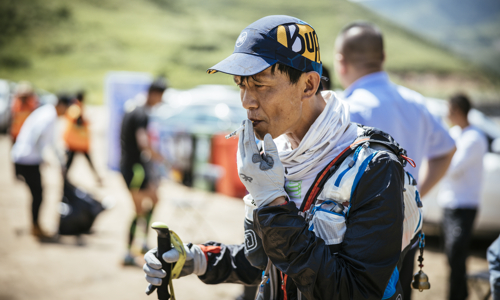
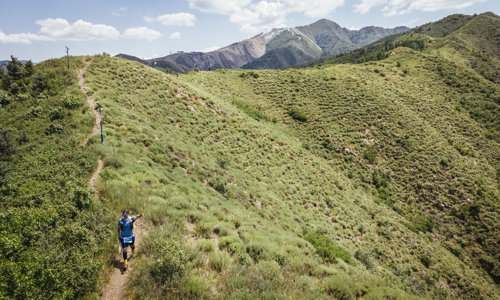
A powerful experience - not just for the participants
The last athletes reached the finish line, most of them walking. This adventure was finally over, and it had been an unforgettable one, not just for the participants. The race was just as well organized as was my care. Patrick, my guide, proved to be more than just a translator and a helper; he was also an extremely interesting and interested conversation companion. Once again, I had learned so much: the Chinese are total outdoor sports fanatics; nature and the environment just a few hours' drive outside of Beijing looks a lot more like my homeland that I'd expected; even after a three-day slog, the athletes could still smile and flash a victory sign for the photographer; the hot in "hotpot," a local specialty, doesn't just refer to the temperature! I'm already looking forward to being able to attend the next event as their photographer.
Credits - WorldwideRunning.com would like to thank Martin Bissig (www.bissig.ch) for the authorization to reprint the article "Trail running along the Great Wall of China". Photos and text © by Martin Bissig. Online registration for non-Chinese residents and additional information on the "Columbia SANFO Ultra 168" trail challenge for international participants can be found at www.chongli-ultra.com.

